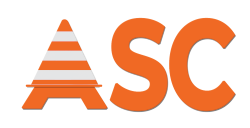30-Hour Construction Industry (29CFR 1926)
What is OSHA 30 Construction Training?
When you’re responsible for reducing the risk of injuries on a construction site, you need access to resources and a comprehensive training background to ensure jobsite safety. Specifically devised for safety directors, foremen, and field supervisors; ASC’s 30-Hour Construction Industry Training provides a deep-dive into the CFR 1926 OSHA Construction Industry Standards.
OSHA’s 30 Hour Construction Industry Outreach Training Program is designed to teach students how to create and implement a safety and health program that addresses critical safety topics in the construction industry, such as stairways and ladders, confined spaces, hand and power tools, scaffolding, and excavations. Upon course completion, participants will be able to identify, assess and reduce the risk of workplace safety incidents.
Who Should Take OSHA 30 Construction Training?
The OSHA 30 Hour Construction Outreach course is for construction foremen, supervisors, and safety directors, or anyone who works in construction and requires additional training beyond the basics. Special emphasis will be placed on Client-specific workplace hazards.
Upon successful completion of the course, participants will receive a Certificate of completion. OSHA 30-Hour Construction DOL card will arrive within 6-8 weeks.
COURSE OBJECTIVES:
- Explain the importance of OSHA in providing a safe and healthful workplace to workers
- Recognize OSHA Standards references applicable to specific hazardous conditions and practices (Introduction to OSHA Standards)
- Recognize the aspects of 1926 Subpart C (General Safety and Health Provisions)
- Implement preventative measures for accidents in their workplace (Subpart D – Occupational health and Environmental Controls)
- Describe types of personal protective equipment (PPE), and the requirements for its use in OSHA standards (Subpart E – Personal Protective Equipment)
- Recognize the requirements for fire protection in the workplace (Subpart F – Fire Protection and Prevention)
- Identify the various types of rigging equipment used to protect employees (Subpart H – Rigging; Subpart N – Cranes and Rigging)
- Identify the critical health and safety hazards of welding and cutting in the construction industry (Subpart J – Welding and Cutting)
- Identify common electrical hazards and related OSHA standards (Subpart K – Electrical Standards)
- Recognize the importance of scaffolding for workers in elevated workplaces (Subpart L – Scaffolding)
- Implement measures for protecting workers and equipment from dangerous falls (Subpart M – Fall Protection)
- Recognize the hazards associated with working in or around excavation sites (Subpart P – Excavations)
- Explain the safety requirements necessary to protect workers around concrete and masonry jobs (Subpart Q – Concrete and Masonry)
- Protect workers who perform jobs on or around stairways or ladders at worksites (Subpart X – Stairways and Ladders)
- List and describe the hazards and prevention required for confined spaces.
TOPICS COVERED:
- Introduction to OSHA
- Managing Safety and Health
- OSHA Focus Four Hazards
- Personal Protective Equipment
- Health Hazards in Construction
- Stairways and Ladders
- Concrete and Masonry Construction
- Confined Spaces
- Cranes, Derricks, Hoists, Elevators and Conveyors
- Ergonomics
- Excavations
- Fire Protection and Prevention
- Materials Handling, Use and Disposal
- Motor Vehicles, Mechanized Equipment; Signs, Signals and Barricades
- Safety and Health Programs
- Scaffolds
- Tools – Hand and Power
- Welding and Cutting
- Silica Exposure
- Lead Exposure
- Asbestos Exposure
OSHA DOL Cards & Certifications
Wallet Cards (Department of Labor cards) your card will be mailed to you after completing the Outreach Training course. Since 2016, these cards are made of durable plastic, so you can carry it with you to show employers or inspectors.
Certificates are issued immediately and act as proof that you completed the course before your wallet card arrives.
